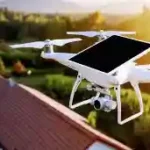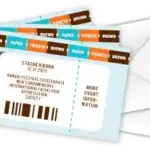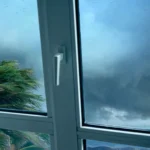Today, videos are everywhere. They tell stories, share ideas, and connect people. They’re important for anyone who wants to share their message, whether you’re just starting out or you’ve been making videos for years.
If you want your videos to stand out, you need to know how to edit them well. Good editing turns a simple video into something great. It’s not just about cutting and joining clips. It’s about making your video flow, keeping viewers interested, and showing your message clearly.
To get good at video editing, you need to understand the tools and techniques. This means knowing which software to use and how to use it. It’s about choosing the right effects, fixing colors, and making sure your sound is just right.
Understanding the Basics of Video Editing
Fundamental Concepts and Terminology
Video editing is like cooking. You start with different ingredients (your video clips) and mix them to create something delicious (your final video). Here are some easy terms:
Trimming and Cutting in Video Editing
Trimming and cutting are fundamental techniques in video editing. They’re like the bread and butter of making a great video.
What is Trimming?
Trimming is like tailoring your clothes to fit just right. In video editing, it means picking the start and end points of your clip. It’s like saying, “This is where my video begins, and this is where it ends.” You trim to keep the best parts of your video and remove what you don’t need.
Why Trim?
- Keep it Interesting: Long videos can bore people. Trimming helps keep only the exciting parts.
- Tell a Clear Story: By cutting out the extras, your story stays clear and easy to follow.
- Save Time: Shorter, trimmed videos are quicker to watch. People like that.
What is Cutting?
Cutting is like switching scenes in a play. It’s when you go from one clip to another. Imagine you’re telling a story with pictures. Each cut is like moving to the next picture.
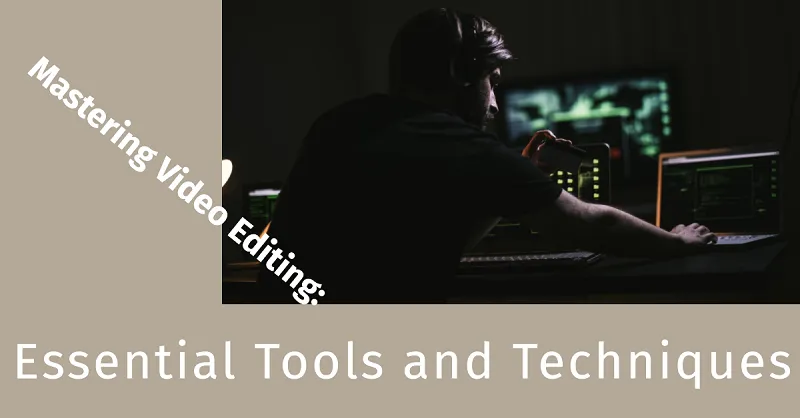
Why Cut?
- Change the Scene: Show different places or times. It keeps the video dynamic.
- Show Different Angles: Like looking at something from different sides. It makes your video more interesting.
- Control the Pace: Fast cuts can make things feel exciting. Slow cuts can build suspense.
Tips for Trimming and Cutting
- Watch Your Timing: Don’t cut too fast or too slow. Find a rhythm that feels good.
- Keep it Smooth: Make sure your cuts don’t feel too sudden. They should feel natural.
- Focus on Your Story: Every trim and cut should help tell your story. If it doesn’t, maybe it doesn’t belong.
3. Transitions in Video Editing
Transitions in video editing are like bridges in a journey. They smoothly take you from one scene to another. Let’s explore why they’re important.
What Are Transitions?
Think of transitions as the glue that holds your story together. They’re the gentle shift from one clip to the next. It’s not just about moving; it’s about keeping the flow.
Types of Transitions
- Fade to Black: This is like slowly closing your eyes and then opening them to a new scene.
- Wipe: Imagine a new scene pushing the old one out of the way.
- Dissolve: Two scenes blend into each other. It’s like mixing two colors of paint.
Why Use Transitions?
- Smooth Changes: Transitions make changes feel natural, not sudden or jarring.
- Show Time Passing: They can show that time has moved forward or backward.
- Connect Ideas: Transitions can link different parts of your story.
Tips for Using Transitions
- Keep It Simple: Don’t overdo it. Simple transitions often work best.
- Match the Mood: Choose a transition that fits the feeling of your video.
- Practice: Try different transitions to see what works for your story.
Transitions are a key part of video editing. They help your video feel smooth and put together. With the right transitions, your video can tell a story that flows beautifully from start to finish.
4. Audio Editing: Making Your Videos Sound Great
Audio editing is a big piece of the video puzzle. Learning to manipulate audio tracks is like adding the right spices to a meal. It can turn a good video into a great one.
What is Audio Editing?
Think of audio editing as fine-tuning the sounds in your video. It’s about making sure every word, note, and sound effect is just right. It’s like polishing a diamond to make it shine.
Why Focus on Audio?
- Sets the Tone: Good audio can make your video feel happy, sad, or thrilling. It’s all about the mood.
- Removes Distractions: Sometimes, unwanted noises sneak into your video. Audio editing helps get rid of these.
- Balances the Sounds: It’s important that music, voices, and effects all blend well. None should be too loud or too soft.
Tips for Better Audio Editing
- Listen Closely: Use headphones to catch every sound.
- Keep it Even: Make sure all your sounds are balanced. No shouting or whispers.
- Match the Mood: Choose sounds that fit your video’s feeling.
5. Color Correction and Grading: Bringing Your Video to Life
Color correction and grading are like painting your video. They add life and mood to your story.
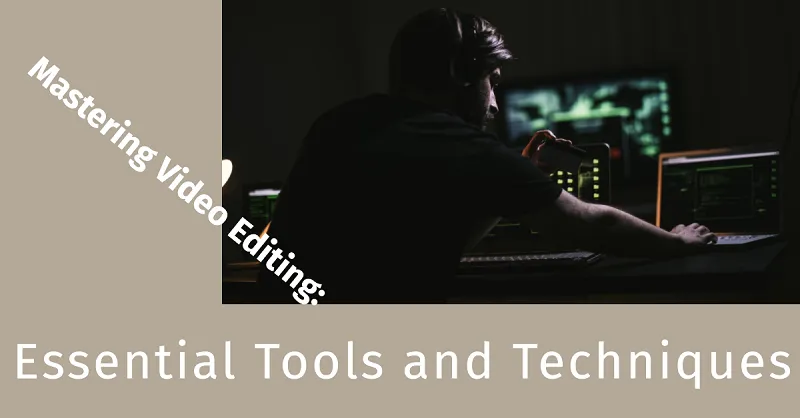
What is Color Correction?
Color correction is like fixing the colors in a photo. It makes sure the colors in your video look real and natural. It’s like adjusting the brightness and contrast on your TV.
What is Color Grading?
Color grading is more about style. It’s like choosing a filter for a photo. It sets the mood. A warm color can make a scene feel cozy. Cool colors can make it feel sad or tense.
Why are They Important?
- Realistic Looks: Color correction makes sure your video looks like real life.
- Setting the Mood: Color grading can change how your audience feels. It’s powerful.
- Consistent Style: It keeps the look of your video the same from start to end.
Tips for Color Work
- Start Simple: Don’t go overboard. Subtle changes can have a big impact.
- Keep Balance: Make sure your colors look good together.
- Practice: Try different styles to see what works for your video.
Color correction and grading can transform your video. They add depth and emotion. With some practice, you can use colors to tell your story in a beautiful way.
6. Titles and Text Effects: Making Words Pop in Your Video
Titles and text effects are like the icing on a cake. They make your video look more interesting and help tell your story.
What are Titles and Text Effects?
Think of titles as the names of your video chapters. They introduce what’s coming next. Text effects are the fun ways these words show up and move on your screen.
Why Use Them?
- Grab Attention: A cool title can make people want to watch more.
- Explain Things: Sometimes, you need words to explain your video better.
- Add Style: Text effects can make your video look more professional and fun.
Tips for Using Titles and Text
- Keep It Clear: Make sure your words are easy to read.
- Less is More: Don’t overcrowd your video with too much text.
- Match Your Theme: Choose fonts and colors that fit your video’s style.
Titles and text effects are great tools. They can make your video more engaging and help your message stand out. With a bit of creativity, you can use words to add an extra spark to your videos
7. Effects and Filters: Adding Magic to Your Videos
Effects and filters are like the special spices in cooking. They add extra flavor to your videos.
What are Effects and Filters?
Think of effects as cool tricks for your video. They can make things move, change shape, or even disappear. Filters are like sunglasses for your video. They change the colors and the mood.
Why Use Them?
- Create a Mood: Filters can make your video feel happy, sad, old-fashioned, or futuristic.
- Add Excitement: Effects can make your video more fun and engaging.
- Tell Your Story: Sometimes, an effect or filter can help explain your story better.
Tips for Using Effects and Filters
- Don’t Overdo It: Too many effects can be distracting. Use them to help your story, not overpower it.
- Choose Wisely: Pick effects and filters that match the feeling of your video.
- Practice: Try different options to see what looks best.
Effects and filters can turn a simple video into something special. They’re tools to help you tell your story in a more creative way. With a little practice, you can use them to make your videos stand out
8. Keyframing and Motion Graphics: Bringing Movement to Your Videos
Keyframing is a technique used to create animations and motion graphics within your video. Keyframing and motion graphics are like puppetry in your video. They make things move and come to life.
What is Keyframing?
Keyframing is like making a dot-to-dot drawing. You set points (keyframes) for where you want something to move. The video software then connects these dots to create movement.
What are Motion Graphics?
Motion graphics are moving designs. They’re like animated pictures or texts that add excitement to your video. Think of them as moving posters.
Why Use Them?
- Tell a Story: Movement can help explain your story. It’s like using your hands when you talk.
- Catch the Eye: Moving things are more likely to grab attention.
- Add Fun: Motion graphics can make your video more lively and enjoyable.
Tips for Keyframing and Motion Graphics
- Start Simple: Begin with easy movements. As you learn, you can try more complex ones.
- Plan It Out: Think about what you want to move and how. It’s like planning a dance.
- Match the Mood: Make sure your movements fit the style and tone of your video.
Keyframing and motion graphics can add a wow factor to your videos. They’re great for making your ideas move and keeping your audience engaged. With a bit of practice, you can use them to make your videos really stand out
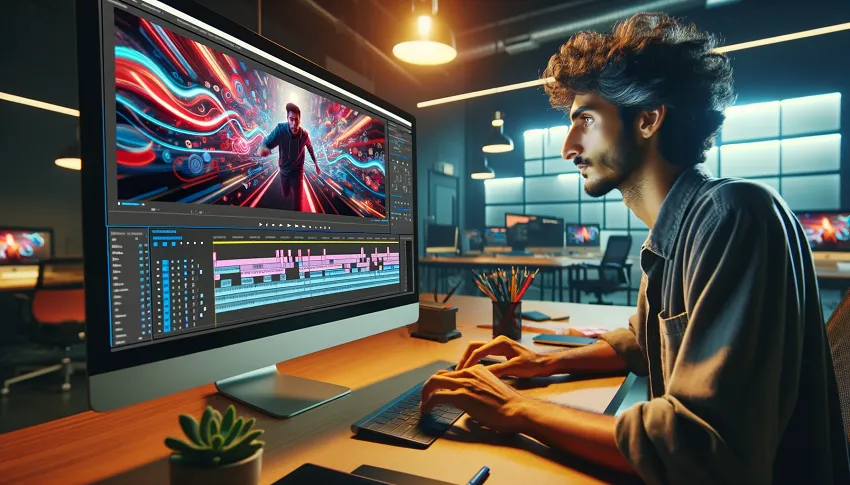
9. Storyboarding and Editing Planning: Mapping Out Your Video
Storyboarding and editing planning are like drawing a map before a trip. They help you see where you’re going with your video.
What is Storyboarding?
Storyboarding is like making a comic strip for your video. You draw scenes to plan what will happen. It’s like sketching your video before you make it.
What is Editing Planning?
Editing planning is deciding how you’ll put your video together. It’s like making a to-do list for your video. You think about what clips you’ll use, how they’ll fit together, and what effects you might add.
Why Do They Matter?
- Saves Time: Planning makes the actual editing faster and smoother.
- Clear Vision: It helps you and others see what you’re aiming for.
- Avoids Mistakes: You can spot problems before you start filming.
Tips for Storyboarding and Planning
- Keep It Simple: Your drawings and plans don’t have to be perfect. They just need to show your ideas.
- Be Flexible: Sometimes, things change. Be ready to update your plans.
- Think Ahead: Imagine how each part of your video will work together.
Storyboarding and editing planning are key steps in making a video. They help you organize your thoughts and make sure your video tells the story you want. With a good plan, you can create videos that are clear, engaging, and fun to watch
Exporting and Rendering: Finishing Your Video
Exporting and rendering are the final steps in video editing. They’re like wrapping a gift. It’s when your video gets ready to be seen.
What is Exporting?
Exporting is saving your video in a format others can watch. It’s like saving a document so you can share it. You choose the format and quality.
What is Rendering?
Rendering is when your computer processes all your edits. It’s like baking a cake. All the ingredients (your edits) come together to make the final video.
Why Are They Important?
- Sharing Your Work: Exporting lets you share your video on TVs, phones, or the internet.
- Quality Control: It helps you make sure your video looks good wherever it’s watched.
- Final Touch: Rendering brings together all your hard work. It’s the last step before your video is complete.
Tips for Exporting and Rendering
- Be Patient: Rendering can take time. It’s like waiting for paint to dry.
- Check Formats: Make sure you export in a format that works for where you want to show your video.
- Double-Check: Watch your exported video to make sure everything looks and sounds right.
Exporting and rendering are your final steps. They turn all your editing into a video ready to be enjoyed. With these last touches, your video is ready to shine
Conclusion
Video editing is more than just a skill. It’s a way to speak in the digital world. Dive in, play with different tools, and see what you can create. Your next video could be something really special
Luckily, with the help of PC builder websites, it is easier than ever to build a high-performing machine that can handle even the most demanding editing projects. So, don’t forget about your PC as you strive for excellence in video editing – it could make all the difference in unlocking your true potential as a creator.

